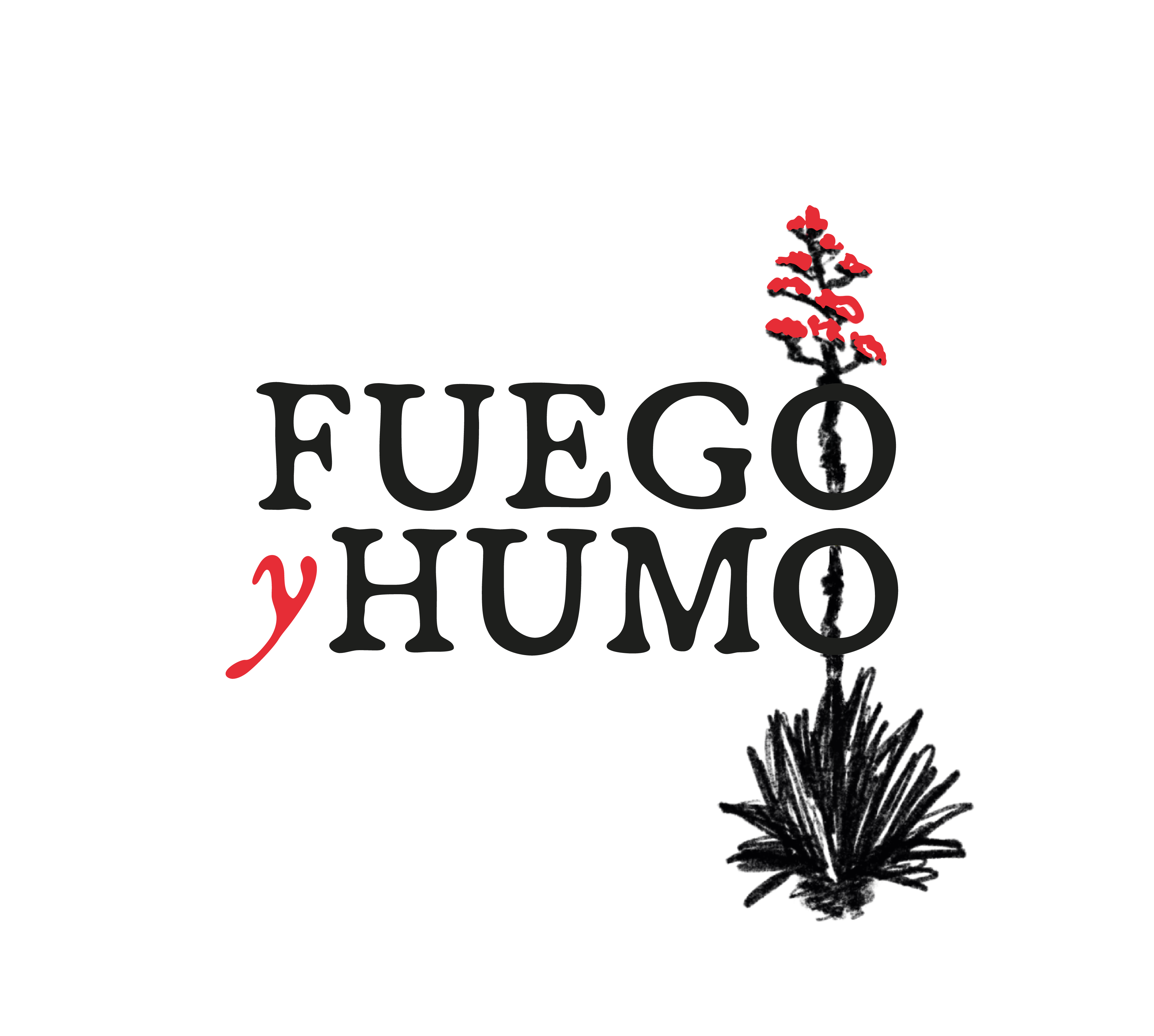The Artisanal Process

Harvesting
Depending on the exact species, an agave can take anywhere from 7-30 years before reaching maturity.
Harvesting during the agave's maturity ensures that the agave has the highest amount of carbohydrates available which ultimately means more volume of distillate and a better tasting product.
Most mezcaleros rely on the quiote (flowering stem) as a sign of when an agave is ready. Agaves only reproduce once in their lifetime, so the quiote signifies the end of its long life cycle. Regardless of whether the agave is cultivated or harvested in the wild, a tremendous amount of work is required. The pencas (leaves) are first cut and then the remaining heart of the agave (the piña) is halved or further quartered as needed. Each piña* can weigh hundreds of pounds, so donkeys, rolling, and teamwork is often required for transportation.
*Per Piña
- Espadín - 150 - 250 pounds
- Tobalá- 60 - 120 pounds
- Tepeztate - 70-180 pounds
In order to ensure a sustainable crop, current industry standards recommend allowing 15%-20% of the wild agaves go to seed.
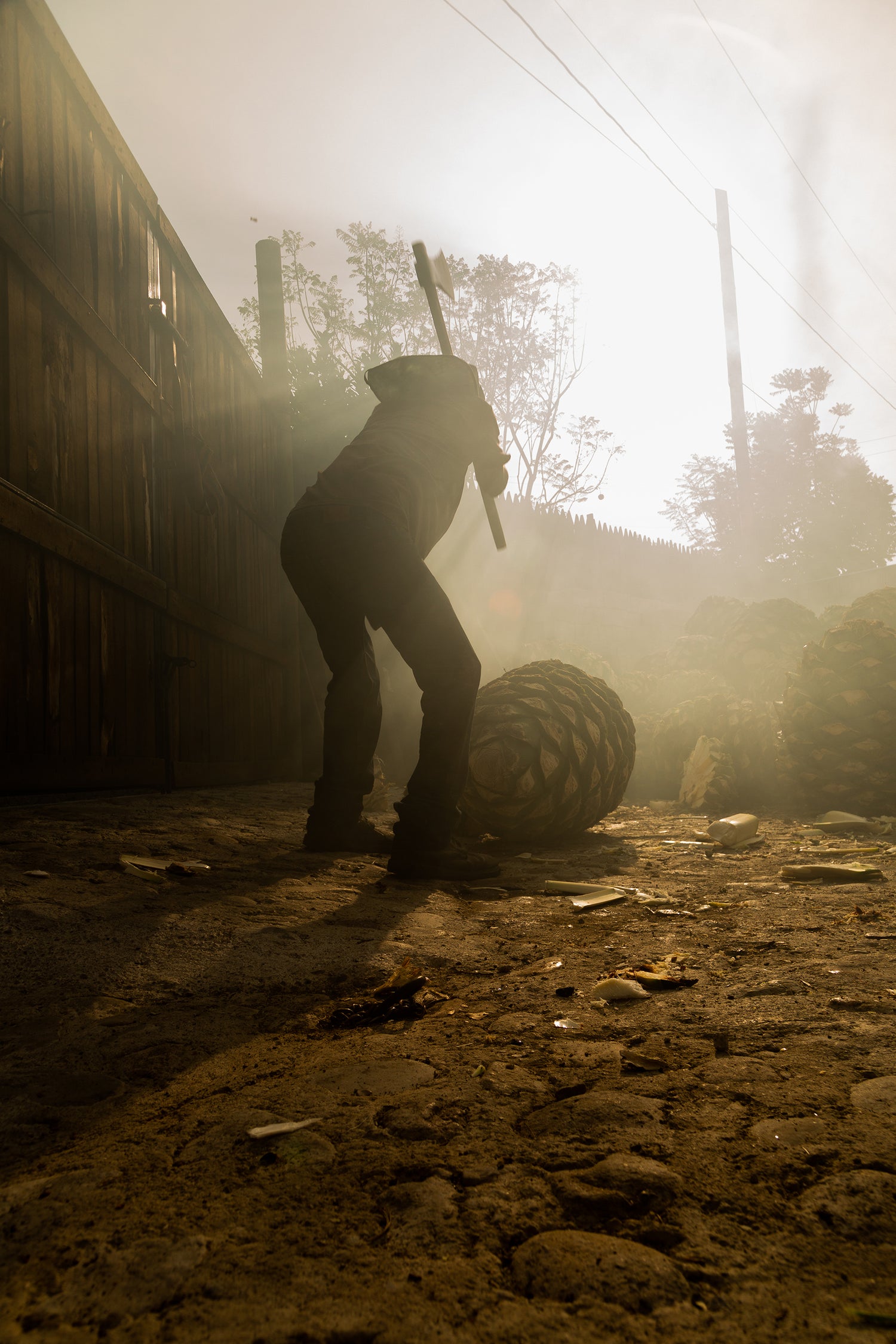
Chopping
Whether done in the field during the harvest, or back at the palenque, each agave needs to be chopped and axed into the right size for optimal roasting.
The tobalás are small enough that the piña can often be roasted whole, while the espadín and tepeztate agaves are cut into quarters.
This step is done as the horno, or earthen pit, is heating up in preparation for the roast.
As with all steps in the artisanal process, this step is also done by hand (with an ax).
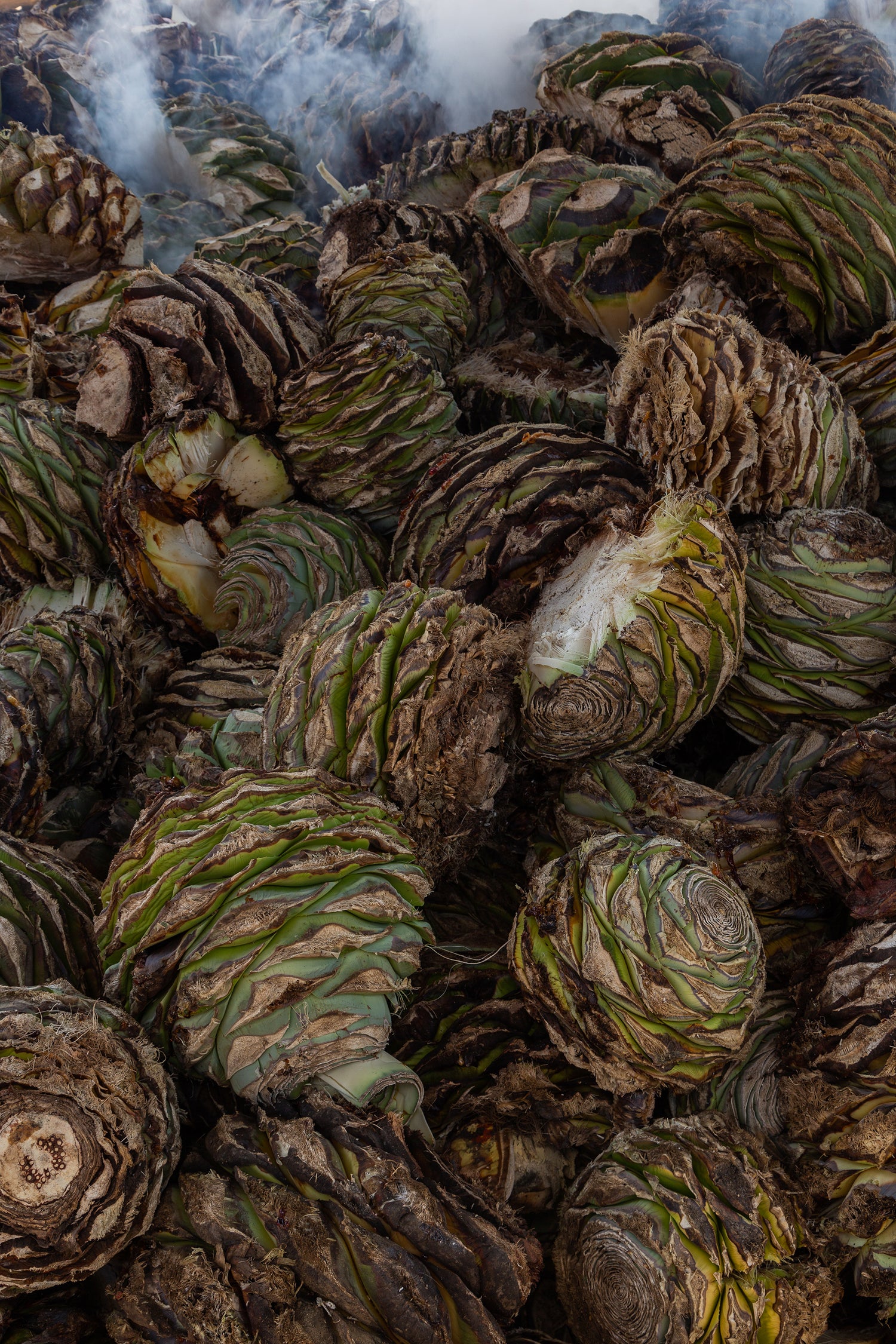
Roasting
Inside the earthen pit, rocks and stones piled into the center of the horno are heated by firewood.
Once the wood is burned off and the stones are adequately heated, bagaso (leftover agave pulp) is added on top of the rocks. This bagaso prevents charring and an overly smoky taste being imparted to the mezcal.
The chopped agave piñas are then placed on top of the bagaso and more piñas are stacked on those creating a 'round pyramid' of raw agave.
Tarps are then wrapped around the entire oven which helps with insulation. Dirt is tossed on top of the tarps for further insulation.
The very slow roasting process now begins and can take from 4-7 days to be complete. During this time, the agaves slowly caramelize as the carbohydrates are converted to sugars. Up to 35,000 pounds of agave can be roasted at any one time in this particular oven.
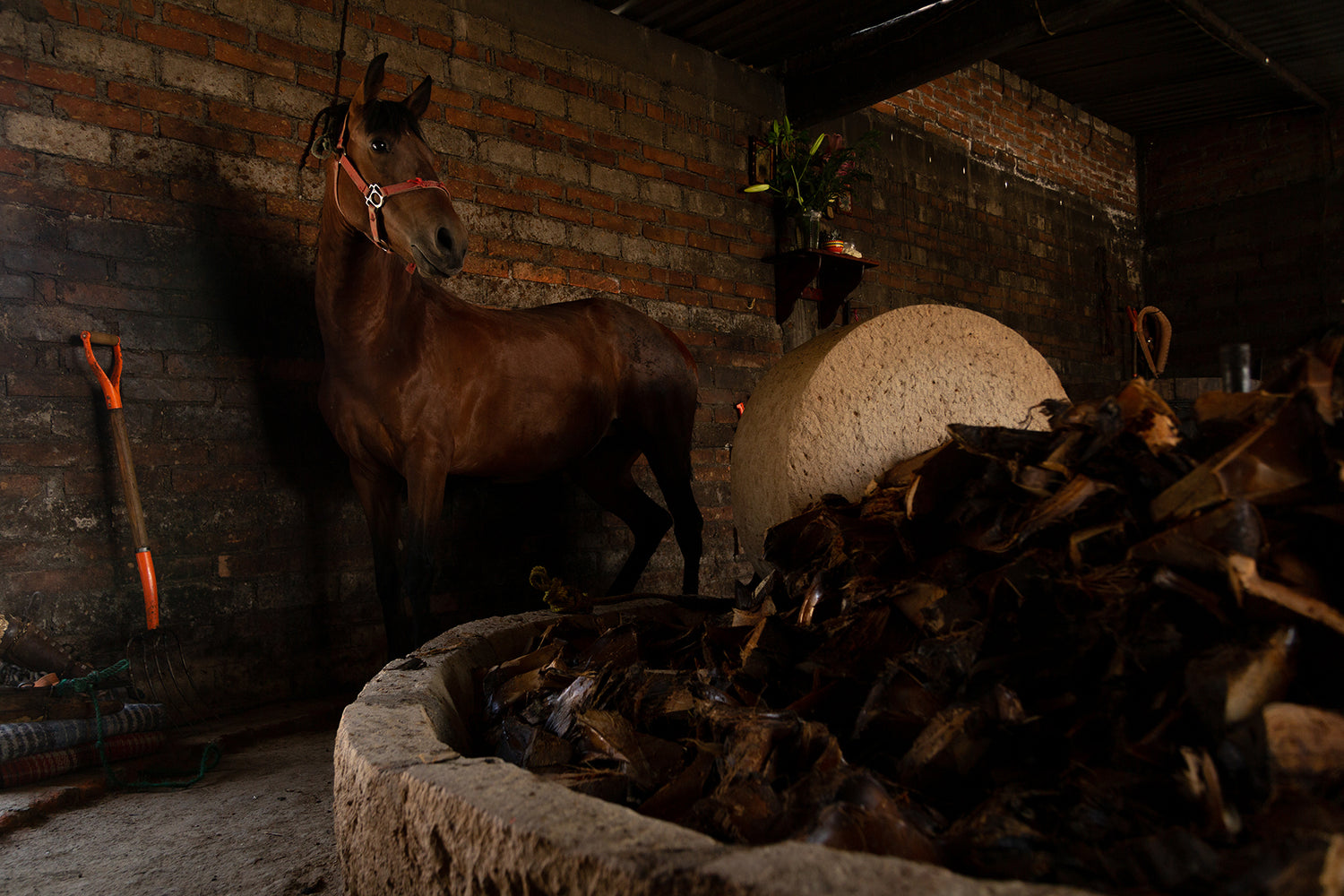
Milling
The cooked and juicy agave piñas must now be crushed into small hairlike strands. This step is necessary for an optimal fermentation. Exposing the maximum surface area of the roasted agave results in a bigger yield and better quality mezcal.
The artisanal way to do this is via a horse (or donkey, mule or ox), and a large stone and cement wheel called a tahona. The working animal pulls the tahona around until all of the agave is fully crushed (or "milled") to the mezcalero's desire. The agave is now in small hairlike strands which are pitched (yes, using a pitchfork!) into a nearby wooden tank for fermentation.
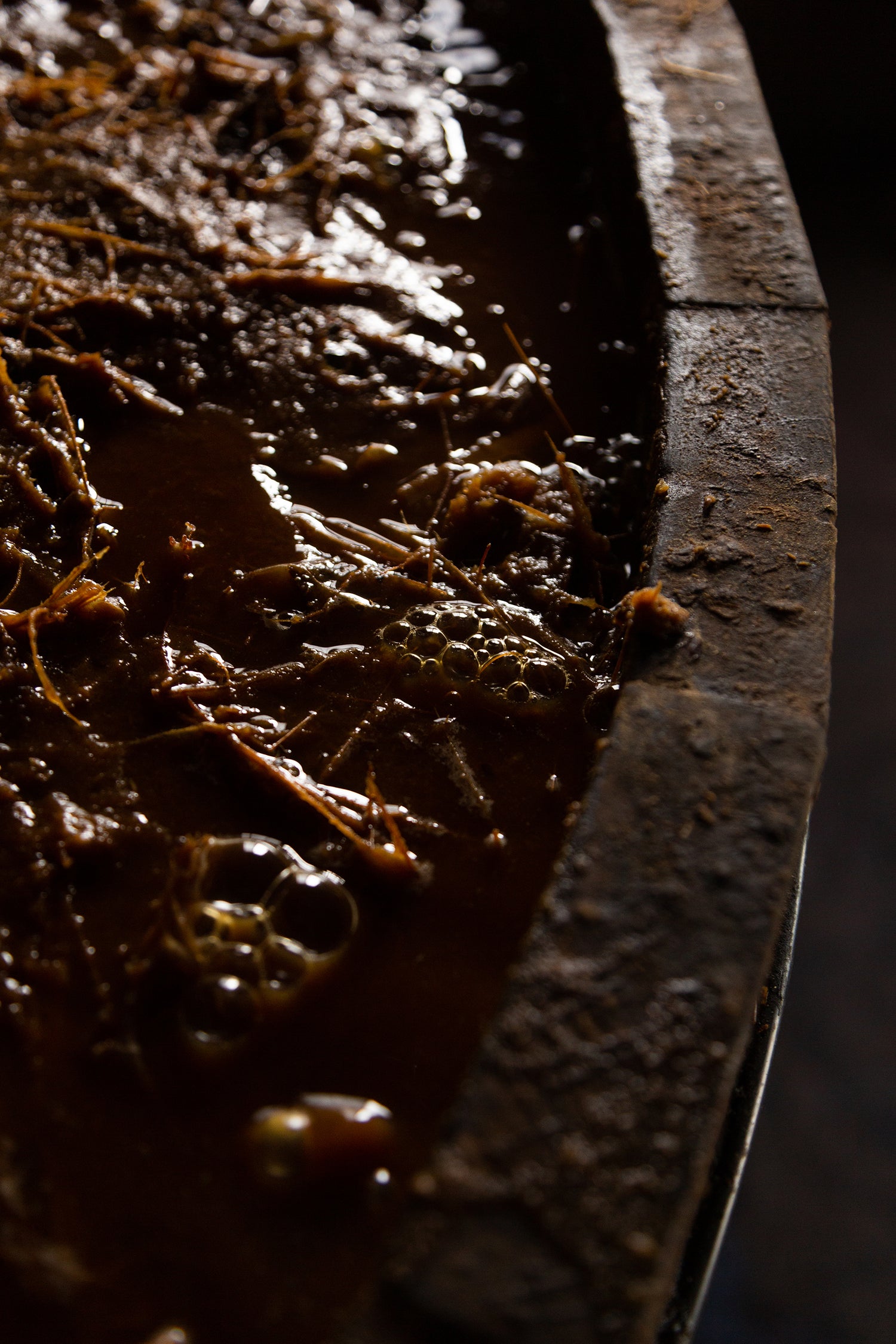
Fermentation
This step is where the real magic happens. The milled agave is put into vats along with water. For Fuego Y Humo mezcals, the vats are pine wood tinas and the water comes from a local well.
Time then gets to work as local yeasts in the air slowly convert the sugars in the tank to ethanol, CO2, and other alcohol byproducts. This process can take anywhere from a few days to weeks and all depends on local temperature, altitude and the micro climate at the palenque. These local yeasts result in a lot of the unique flavor of mezcal and are one of the main reasons why the same agave species can taste drastically different.
The fermentation process will cause the mixture to physically rise in the tanks. It will start bubbling and heating up as the yeast goes to work. Fermentation is complete when the bubbling slows down to a simmer and the mezcalero deems it ready. The ABV at this point is around 3-6%.
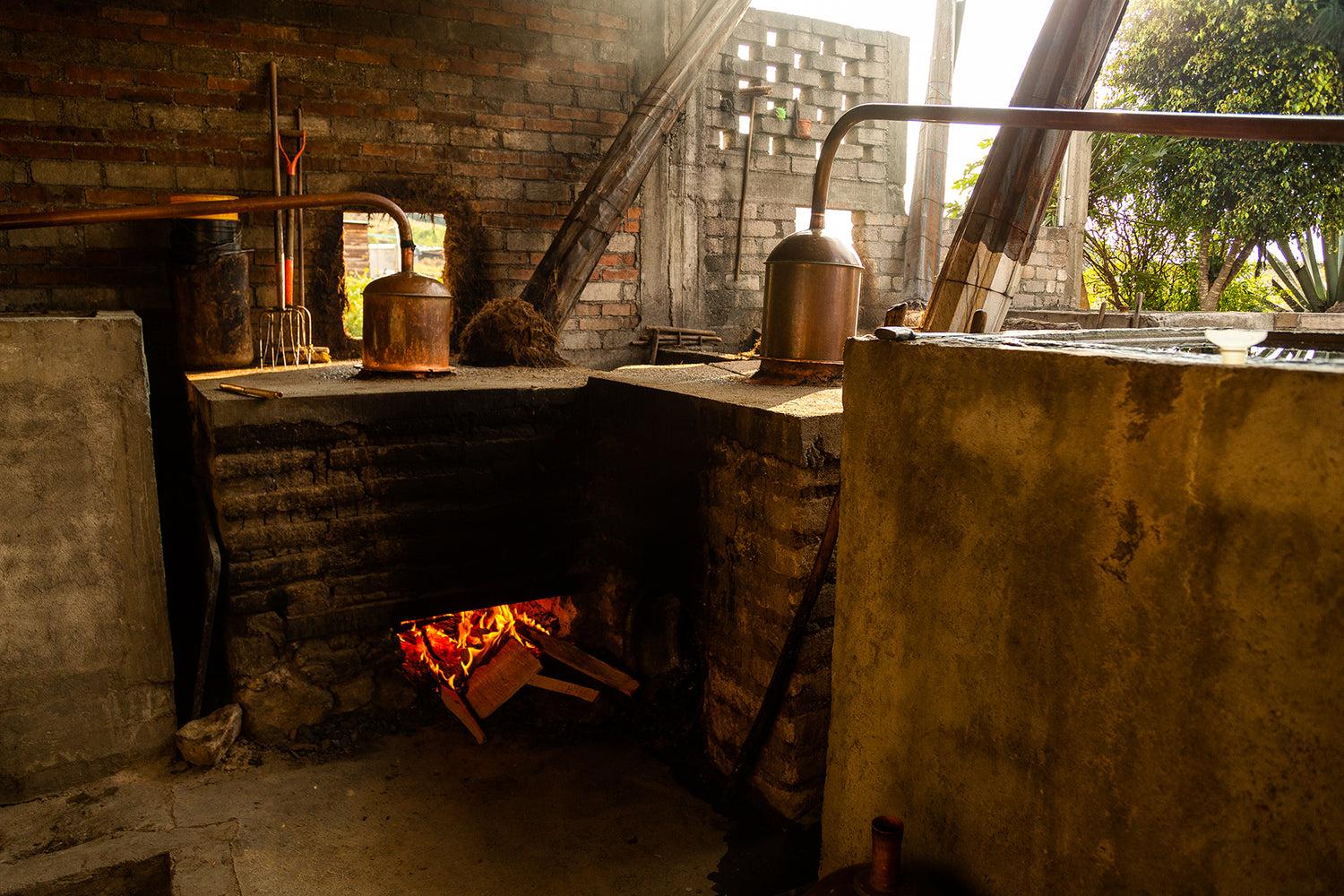
Distillation
Once finished, the fermented liquid and strands of pulp are added to the distillation still.
Mezcal is one of the only spirits to incorporate both the liquid and milled plant matter into the still. While this technique ensures full flavor is passed to the distillate, it also requires additional labor to clean and prepare the still for the next batch.
The liquid in the bottom tank is slowly heated via firewood eventually transforming into vapor. These vapors continue up the still and are condensed back into a liquid state as they pass through a copper coil surrounded by cool water. The liquid then passes out of the still as alcohol.
There are many different forms and types of stills used. Fuego Y Humo mezcal uses a copper still.
Throughout the distillation, the mezcalero will make 'cuts' as the liquid comes out separating different parts of the distillate. These cuts are based on taste, alcohol percentage, and learned knowledge.
In general, the first cuts are called puntas (heads) containing more methanol and thus a stronger ABV, the corazón (heart), and finally the colas (tails) containing mostly water.
A second distillation is done after the first to further purify the final product, with the same cuts being made.
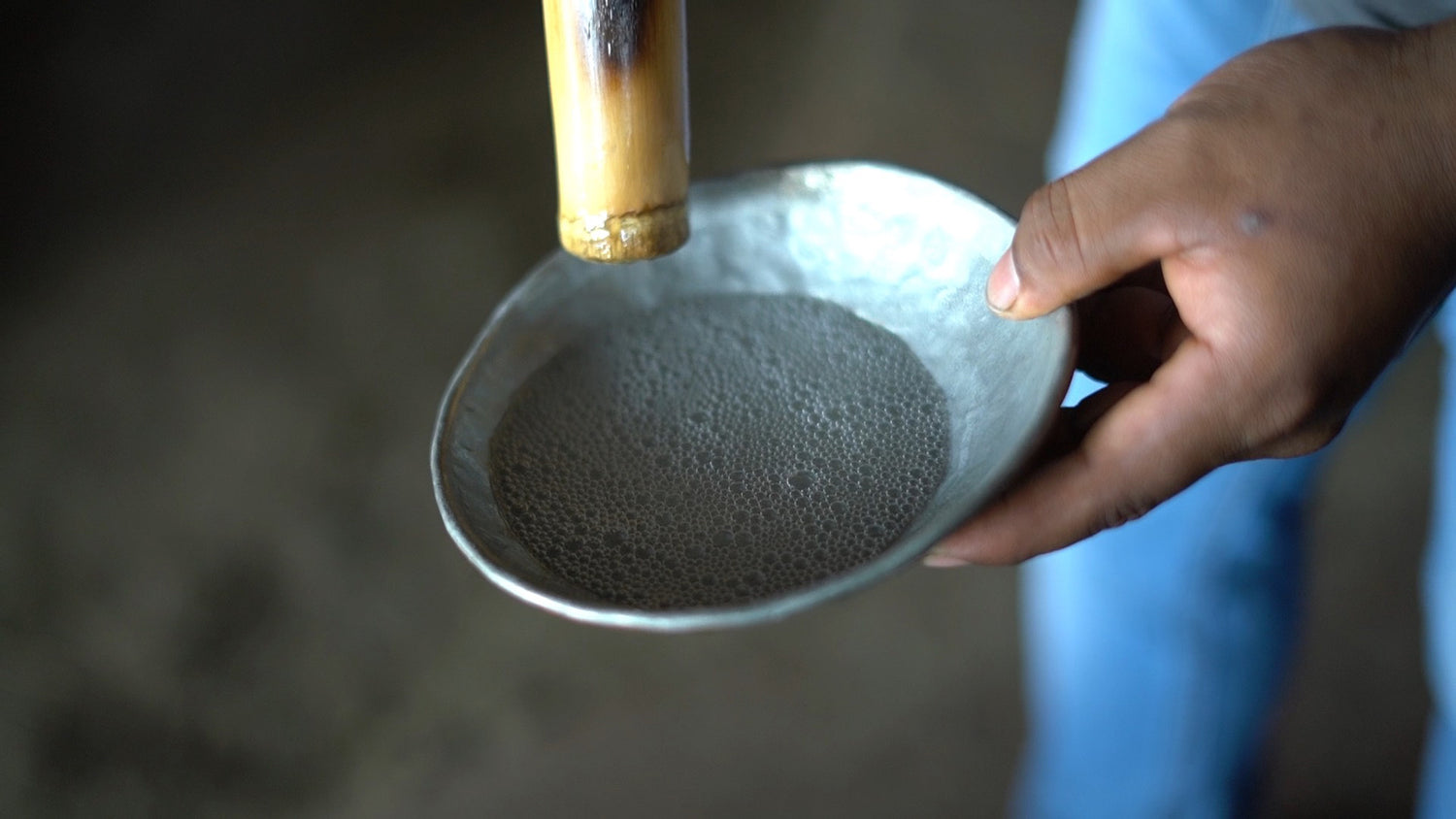
ABV Adjustments
The mezcalero now adjusts the final product to his taste preference as well as a desired ABV. In the case of Fuego Y Humo, this is done by using the colas (tails or last cut) along with the corazon to achieve the desired 47% ABV and beautiful, delicate taste.
The mezcalero is able to estimate the ABV with a surprising degree of accuracy by observing the longevity of the bubbles (called perlas) when the mezcal is released through a bamboo tube into a small vessel such as a jicara or copita.
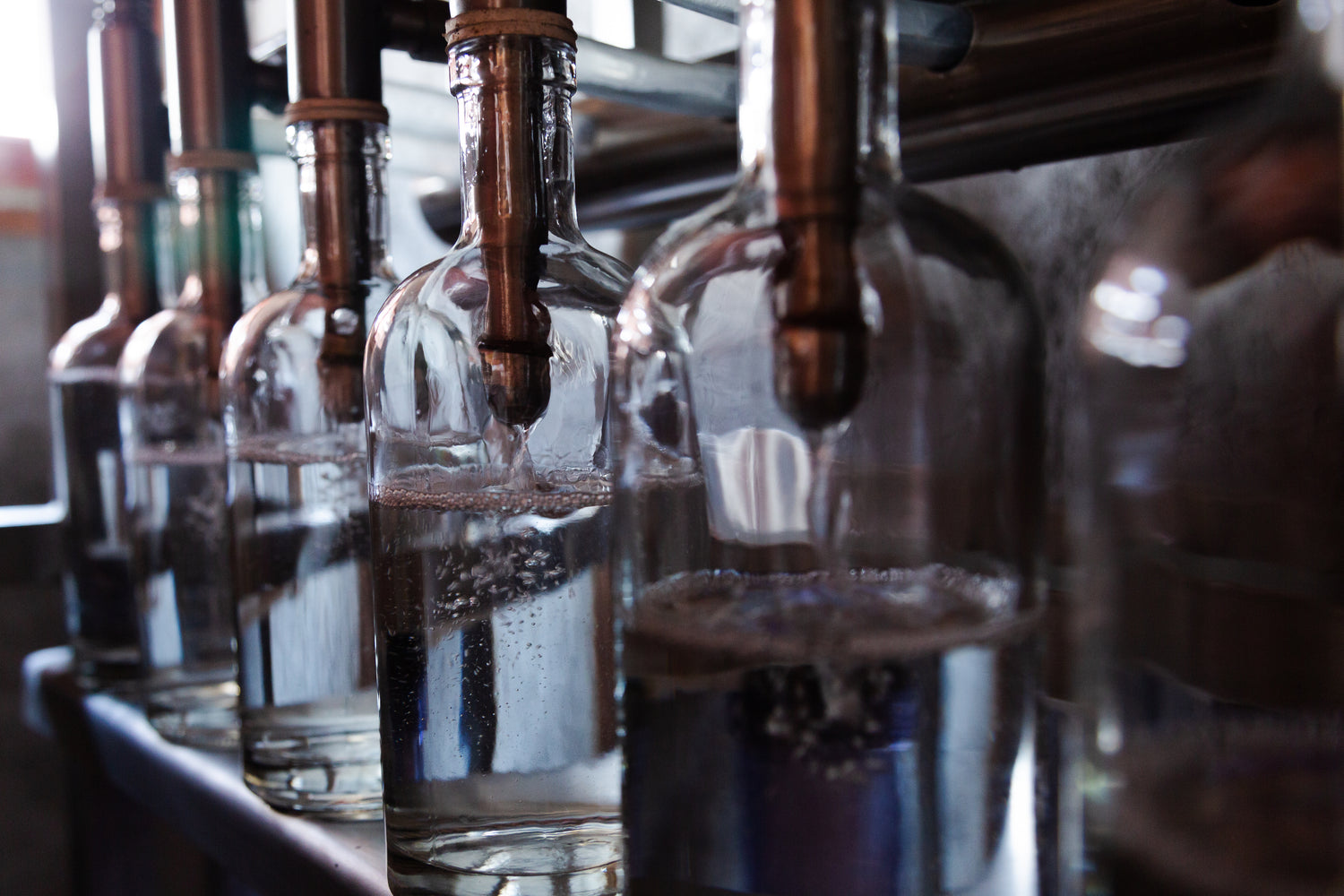
Bottling & Labeling
After the final distillate is cut and mixed to preference, the mezcal is rested in industrial vats. This resting period can be anywhere from 3 months or in the case of our tepeztate and tobalá, a full year. According to José, this resting period helps improve the taste of the mezcal.
Finally, at the same palenque where the above steps took place, the mezcal is bottled, corked, labeled and sealed. The bottles are then boxed, inspected and approved for exportation.
After a two week land journey by truck, the bottles arrive in a warehouse in Southern California, and then ultimately to your house . . from Oaxaca to you!
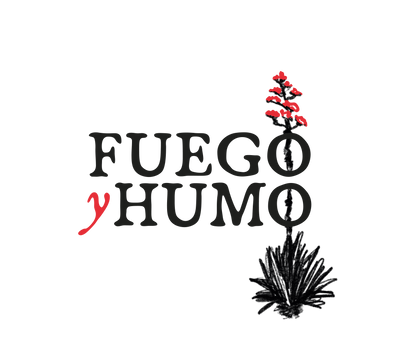
Bienvenido! You must be older than our favorite tepeztate agave (21+) to enter.
Are you over 21 years of age?
- Choosing a selection results in a full page refresh.
- Opens in a new window.
